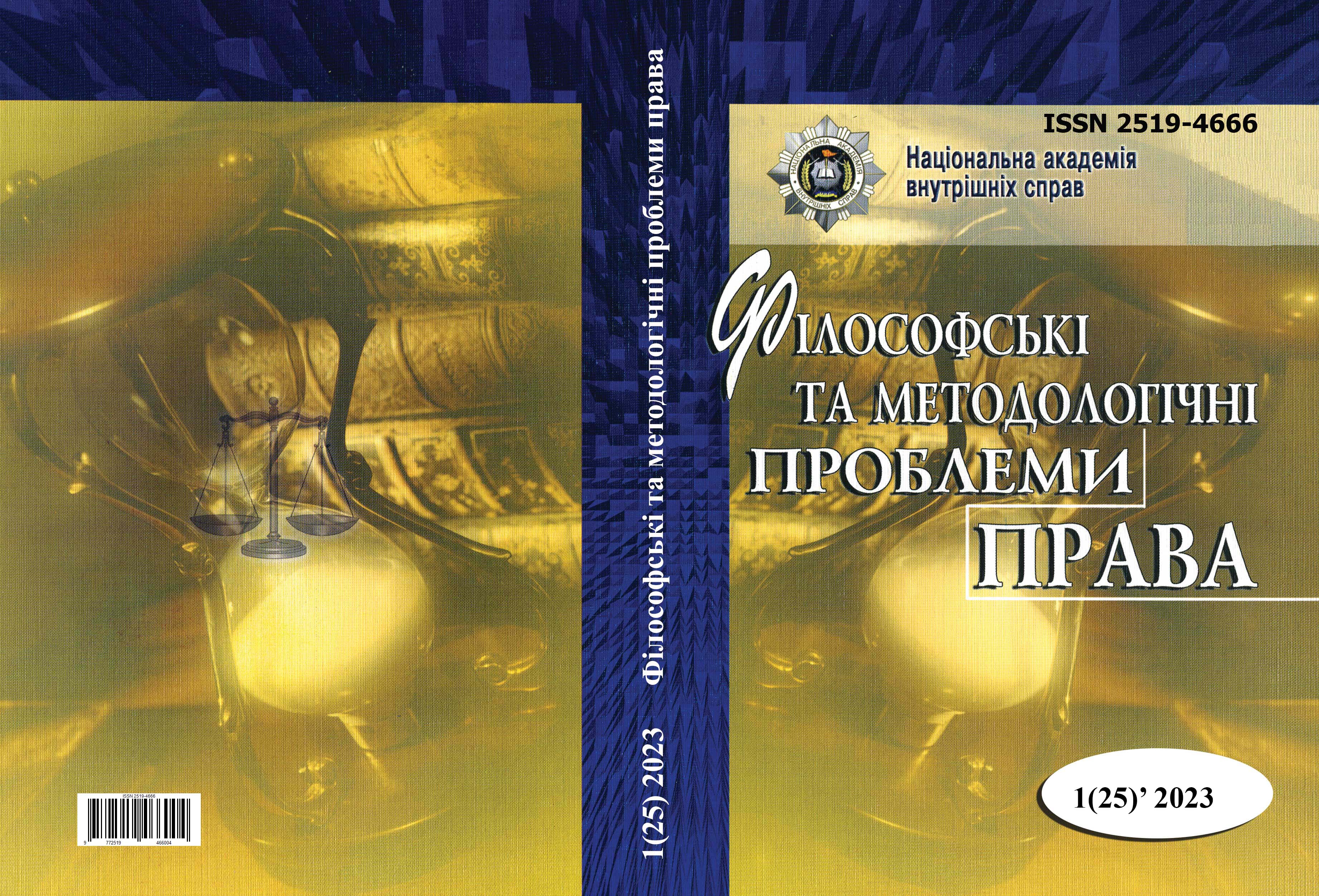The Standpoint for the Legal Course Onward to the Protection of Deceased Biometric Data
Abstract
Abstract. The state of the art of technology shall plays a crucial role in promoting respect for fundamental rights, including data protection. It is important to govern individuals’ personal data after their death to maintain dignity and ensure data protection as much as possible. From this perspective, the article describes the line between real-world of unique immortal characteristics, which gives eternal life, to the deceased represented in a digital form. An innovative and interdisciplinary approach with the legal reasoning applies in the research to encompasses a broader perspective, and to substantiate the theme assertion. The authors identify the problem in the General Data Protection Regulation (GDPR) that protect ‘alive’ biometric feature only, and, thus, escape to regulate biometric data of the deceased. It gives the possibility to business do not follow exact prohibition defined in Article 9 (1) concerning the processing of deceased biometric data since this provision disregard data after the death. While the GDPR does not apply to the personal data of deceased persons, there is a debate on whether it should. Considering this GDPR weakness, the research article seeks to propose solution through the need in a European Union (EU) law that will govern biometric data of the deceased according to the technological, philosophical, and biological grounds. Accordingly, the EU lawmakers shall take towards measures for the normative connection between ‘life’ data of the natural persons and biometric data of the deceased for the best personal data protection.
Keywords: individual; personality; life; dead; identification; biometrics; personal data; human dignity; General regulation of data protection; European Union.
Downloads
References
Agamben, G. (1998). Homo sacer: sovereign power and bare life. Stanford University Press.
Burk, D.L. (2021). Algorithmic Legal Metrics. Notre Dame Law Review, 96(3), 1147. Retrieved from https://scholarship.law.nd.edu/ndlr/vol96/iss3/6.
Byrnes, W.H. (2005). Ancient Roman munificence: the development of the practice and law of charity. Rutgers Law Review, 57(3), 1043. Retrieved from https://ssrn.com/abstract=2314731.
CJEU, Judgment of the Court (Grand Chamber), Case C-146/13, Kingdom of Spain v European Parliament and Council of the European Union, ECLI:EU:C:2015:298, 5 May 2015. Retrieved from https://curia.europa.eu/juris/document/document.jsf?text=&docid=164092&doclang=EN.
CJEU, Judgment of the Court (Grand Chamber), Volker und Markus Schecke GbR (C-92/09) and Hartmut Eifert (C-93/09) v Land Hessen, ECLI:EU:C:2010:662, 9 November 2010. Retrieved from https://eur-lex.europa.eu/legal-content/EN/TXT/?uri=CELEX%3A62009CJ0092.
CJEU, Judgment of the Court (Second Chamber), Case C-434/16, Peter Nowak v Data Protection Commissioner, ECLI:EU:C:2017:994, 20 December 2017. Retrieved from https://eur-lex.europa.eu/legal-content/en/TXT/?uri=CELEX:62016CJ0434.
Erdos, D. (2021). Dead ringers? Legal persons and the deceased in European data protection law. Computer Law and Security Report, 40, 105495. doi: https://doi.org/10.1016/j.clsr.2020.105495.
European Union Agency for Fundamental Rights (FRA), Opinions Biometrics. Retrieved from https://fra.europa.eu/en/content/fra-opinions-biometrics (last visited 18 March 2023).
Fruehwald, E. (2010). A biological basis of rights. Southern California Interdisciplinary Law Journal, 19(2), 195-235. Retrieved from https://gould.usc.edu/why/students/orgs/ilj/assets/docs/19-2%20Fruehwald.pdf.
Haldar, P. (2013). Forensic Representations of Identity: The Imago, the X-Ray and the Evidential Image. Law and Humanities, 7(2), 129-150. doi: https://doi.org/10.5235/17521483.7.2.129.
Hutton, C. (2019). Linkability, Personhood and State Modernity: Understanding the Affordances of Personal Identity across Different Legal Regimes. Law and Literature, 31(2), 239-257. doi: https://doi.org/10.1080/1535685X.2018.1530840.
Kayuni, S.W. (2016). Quis Custodiet Ipsos Custodes (Who is Guarding the Guardians)? - Decision Processes in the ICC's Offences Against the Administration of Justice. The Law and Practice of International Courts and Tribunals, 15(2), 345-384. doi: https://doi.org/10.1163/15718034-12341326.
Milovanovic, D. (1994). The postmodernist turn: Lacan, psychoanalytic semiotics, and the construction of subjectivity in law. Emory International Law Review, 8(1), 67-98. Retrieved from https://heinonline.org/HOL/LandingPage?handle=hein.journals/emint8&div=9&id=&page=.
Regulation (EU) 2016/679 of the European Parliament and of the Council of 27 April 2016 on the protection of natural persons with regard to the processing of personal data and on the free movement of such data and repealing Directive 95/46/EC (General Data Protection Regulation), OJ L 119, 1-88 (4 May 2016).
Regulation (EU) No 1257/2012 of the European Parliament and of the Council of 17 December 2012 implementing enhanced cooperation in creating unitary patent protection, OJ L 361 (31 December 2012).
Siliquini-Cinelli, L. (2014). Imago veritas falsa : for a (post-) Schmittian decisionist theory of law, legal reasoning, and judging. Australian Journal of Legal Philosophy, 39(39), 118-141.
Singh, C. (2013). Quis custodiet ipsos custodes? Should Justice Beware: A Review of Voice Identification Evidence in Light of Advances in Biometric Voice Identification Technology. International Commentary on Evidence, 11(1), 1-28. doi: https://doi.org/10.1515/ice-2014-0009.
Tarchila, P. (2020). Respect for the Honor, Privacy, and Dignity of the Human Person, Agora International Journal of Juridicial Sciences, 1(34). Retrieved form 329082419.pdf (core.ac.uk).
The Article 29 (A29), Opinion 4/2007 on the concept of personal data, 01248/07/ENWP 136.
Abstract views: 53 PDF Downloads: 88
Copyright (c) 2023 Philosophical and Methodological Problems of Law

This work is licensed under a Creative Commons Attribution-NonCommercial-NoDerivatives 4.0 International License.
- Authors reserve the right to authorship of their own work and transfer to the magazine the right of the first publication of this work under the terms of the Creative Commons Attribution License, which allows other persons to freely distribute published work with mandatory reference to authors of the original work and the first publication of an article in this magazine.
- Authors have the right to enter into separate additional agreements on non-exclusive dissemination of the work in the form in which it was published in the journal (for example, to post an article in the institution's repository or to publish as part of a monograph), provided that the link to the first publication of the work in this journal is maintained.
- The journal's policy allows and encourages the posting of articles by authors on the Internet (for example, in electronic storehouses of institutions or on personal websites), both before the submission of this manuscript to the editorial office and during its editorial processing, as this contributes to the creation of a productive scientific discussion and positively affects the efficiency and dynamics of citing the published work.




